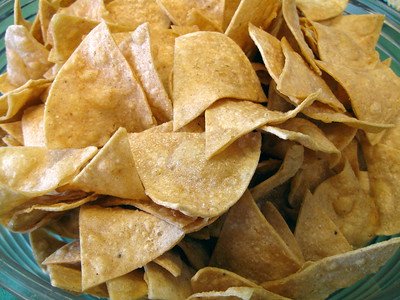Today, we celebrate one of the famous snacks or appetizers, its National Corn Chip Day. This day is observed annually on January 29th.
Corn chip is a snack food made from cornmeal, fried in oil or baked, usually in the shape of a small noodle, or triangles, or scoop shape. Their thick, rigid and very crunchy. It is always heavily seasoned with spices and salt, and it has a strong aroma that makes it very addicting.
In the United States, Fritos is one of the oldest and most widely recognized brands of corn chips, and they are my favorite too. Nowadays, corn chips come in different variety and shaped like a triangle, and normally served on some restaurants with salsa and jalapeno toppings as an appetizer served with some guacamole or salsa.
Corn chips date back in 1932. According to stories, Elmer Doolin bought a bag of fried corn chips and he enjoyed them so much that he had to pawn his mother’s wedding ring (with her permission, I assume…) to purchase the recipe from the manufacturer for $100. He started experimenting on the perfect recipe at home started selling them from the back of his car, and now the company he founded is the largest manufacturer of corn chips in the United States product Frito Corn Chips.
So, today, celebrate this day by grabbing a bag of corn chips or order some corn chips for your appetizer at your local restaurant. Share on social media some photos of your favorite toppings and dip to go with your corn chips using #CornChipDay.
1977 “Roots” premieres on television
January 29, 1977, sees the premiere of Roots, a groundbreaking television program. The eight-episode miniseries, which was broadcast over eight consecutive nights, follows a family from its origins in West Africa through generations of slavery and the end of the Civil War. Roots one of the most-watched television events in American history and a major moment in mainstream American culture’s reckoning with the legacy of slavery.
The miniseries was based on Alex Haley’s novel Roots: The Saga of an American Family, which he claimed was based on research he had conducted into his own family history. Though these claims were later debunked, the story succeeded in dramatizing and personalizing the brutal, true story of the Atlantic slave trade and slavery in America. It begins with Kunta Kinte, a warrior belonging to the Mandinka ethnic group and living in what is now the Gambia. Kunta is captured and sold to slave traders, endures a harrowing journey aboard a slave ship, and is eventually sold to a plantation owner in Virginia. The story follows the remainder of his life, including a brutal scene in which he is tortured into acknowledging his slave name, Toby, and continues to follow his family for several generations. Kunta’s daughter, her son George, and his sons Tom and Lewis experience life on various plantations and are subjected to many historically-accurate brutalities, including the separation of slave families and harassment from whites after the abolition of slavery. The book and miniseries were recognized for balancing this sweeping narrative with intensely personal stories and brutally realistic depictions of the horrors of slavery.
(excerpted from https://www.history.com/this-day-in-history/roots-premieres-on-television)


